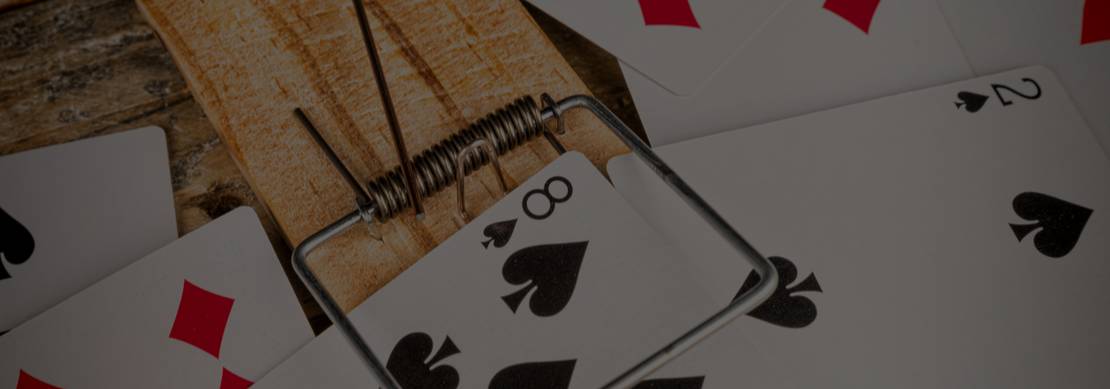When you learn how to play Texas Hold'em, you often focus on the bare basics: which hands are worth your while and which are not, how your position affects your play, and so forth. But once you're done with the fundamentals, it's time to learn new and more complex strategies.
One of the first tools you should strive to acquire is the ability to set traps to trick your opponents. Why is it so crucial? And which traps can you use to increase your chances of winning? Find out the answers to those questions, and you might have a shot at winning bug the next time you play!
Why Poker Traps are Important
Perception is a major part of poker. Whether you play online or live, what your opponents think of you truly matters. If you show you're a strong player straight off the bat, they will be more cautious when dealing with you. And if they catch on to the fact that you're inexperienced, they will take advantage of it.
Knowing this, if you manage to control the way your opponent sees you – aka, making them believe in a false version of you – you will have higher chances of changing the outcome of the game. Now is your chance to learn a few tricks that might help you control your image at the poker table.
3 Poker Traps You Should Learn to Use
- Getting caught bluffing – Some poker players like to show dominance the moment they take a seat at the poker table. But that can be dangerous, as it is bound to put a target on your back. When facing an assertive player who shows confidence in his hand, players tend to bow out of the game, contributing as little as possible to the pot.
But if they believe you're a weak player, they will stick around for longer, even if you show signs of having a strong hand. Deciding to use the fake bluff to create the false impression that you're a weak player is an easy and efficient way to ensure the pot frows bigger before you strike your competition. - Switching strategies midway – A sure way to keep your opponents on their toes is to change your tactics regularly. If the other players can't figure out what kind of player you are, they won't be able to prepare in advance for the moves you make.
If you've started out the poker session playing tightly, your competitors are bound to believe you only play when your hand is strong. That leaves plenty of room for you to bluff your way out of a tough spot. On the other hand, if you create the impression that you're a loose player before you start playing tightly, your opponents will be more inclined to help grow the pot instead of folding pre-flop. - Downplaying your hand – Start the game by adopting a passive playing style. Only call or fold when you have weak hands and go all-in when you believe you have decent chances of winning. Once everyone else believe you're easy to read, start downplaying strong hands.
Act hesitantly and only call during the flop and turn, but when the river comes around, you should strike fast and hard. But be careful! You can't use this strategy too often, as your opponents are bound to become more suspicious the more you downplay strong hands.
In Conclusion
Are you ready to take your poker skills to the next level? Learning how to deceive your opponents to increase your chances of winning will set you on the right path!




